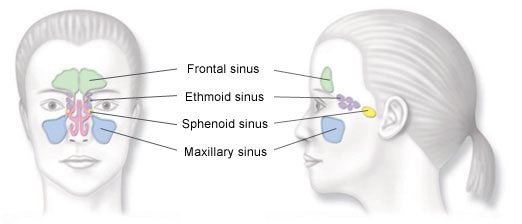Sinusitis Condition and Symptoms
Sinusitis is a serious medical condition that afflicts an estimated 35 million Americans annually and that can cause persistent and intense congestion, headaches and nasal problems. The sinuses are hollow spaces in the skull (i.e. the frontal, ethmoid, sphenoid and maxillary) which serve to lighten the skull and give resonance to the voice. The purpose of the sinuses, which open into the nasal cavity, is to generate mucus to keep the nose from drying out during breathing and to trap unwanted materials so that they do not reach the lungs. Each sinus has an opening that allows mucus to drain. These openings are essential in keeping your sinuses functioning properly and in some cases, smaller openings or blockages cause a buildup of mucus and lead to a sinus infection.

